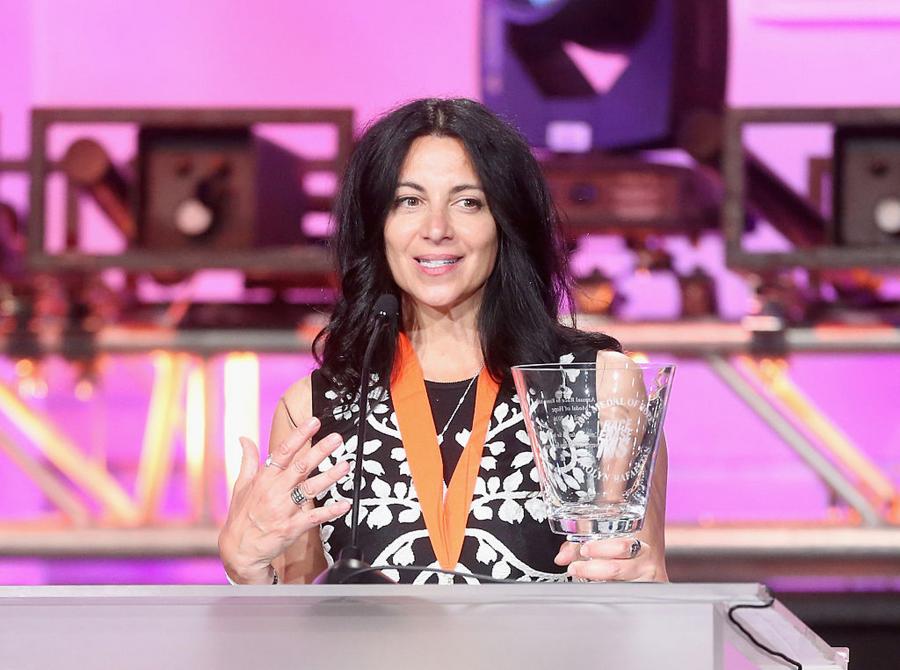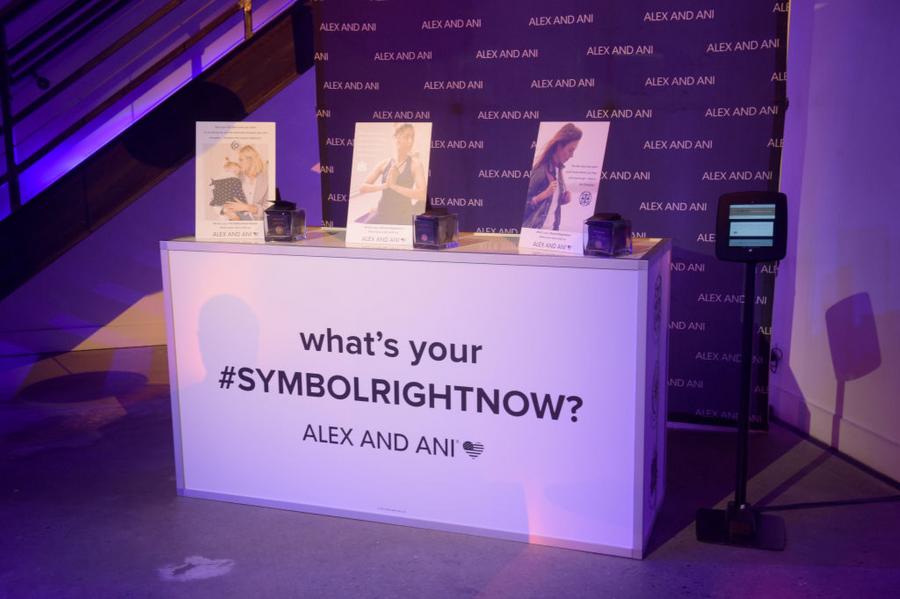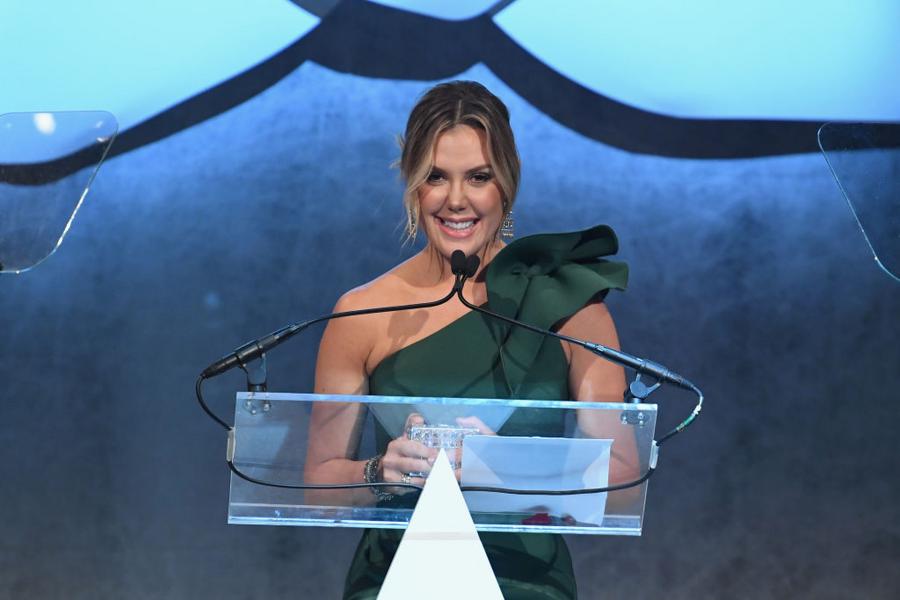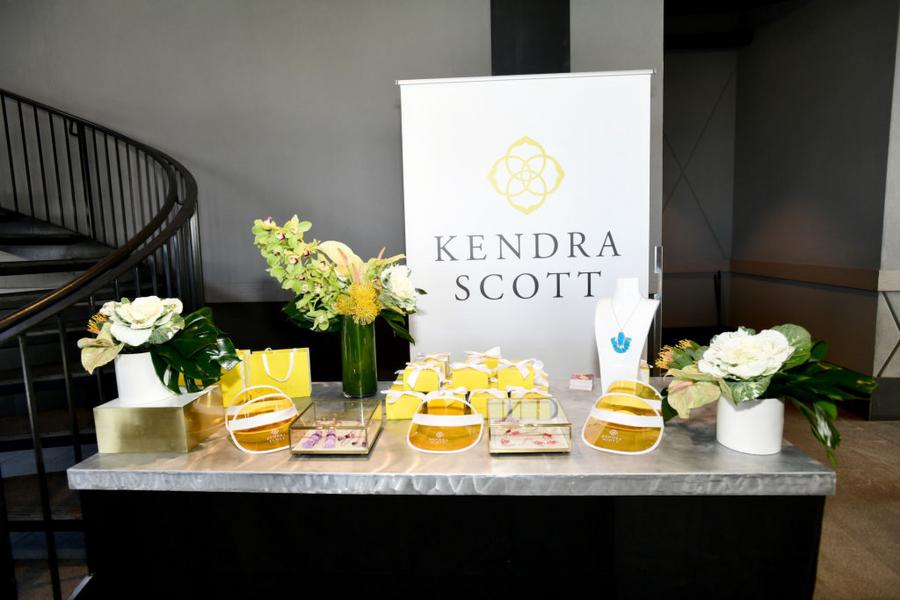Of course, jewelry is big business. Gems and precious metals are expensive. However, that isn't really what Carolyn Rafaelian and Kendra Scott deal in. These two women make costume jewelry and have created billion-dollar empires around their affordable goods. Think about it, how many $35 bangles and $65 earrings did they sell to build their billion dollar brands? The idea of that is pretty phenomenal. Carolyn Rafaelian founded Alex & Ani, which specializes in bangles with charms hanging off of it. Kendra Scott founded her eponymous company when she had a hard time finding high quality, affordable, fashionable costume jewelry. Today, both women preside over their empires knowing they are self-made and have healthy bank balances. Kendra Scott has a net worth of $500 million. Carolyn Rafaelian has a net worth of $1 billion.

Frederick M. Brown/Getty Images
Carolyn Rafaelian makes noise as she walks into a room. After all, she is the founder of jewelry company Alex and Ani, which makes bangle bracelets. Her biggest seller is the charm bangle, of which there are thousands of different charms to attach to declare your zodiac sign, favorite hobby or sport, an achievement, and so on. These stackable bangles are made from recycled scrap metal and sell for $33 each. Rafaelian sells 10 million of these bangles annually. Alex and Ani's revenues were $5 million in 2010. In 2016, they were $500 million.
Rafaelian believes that each piece of jewelry she sells has an energy that can deliver a positive effect to its wearer. Why? Because she has a priest and a shaman bless her inventory before she sells it. Alex and Ani sells positive energy as much as it sells jewelry. Every bangle comes with a "meaning card." A Buddhist Om symbol stands for "God, higher power, and the oneness of all beings in life's cycle." A sailboat charm "bestows peace to its wearer in times of change." The Alex and Ani faithful try to collect all of the charms and meaning cards.
That is exactly how Rafaelian went from a one-woman show run out of her dad's factory basement in Rhode Island into the only jewelry billionaire in the U.S. She owns 80% of her company worth at least $1.2 billion. She's remarkably successful and she's been known to consult astrological charts when making a decision. She keeps dried sage in her desk drawer to burn when she needs to get rid of negative energy. She keeps a healing quartz crystal on a cabinet behind her desk.

Jason Kempin/Getty Images
Rafaelian grew up in Cranston, Rhode Island. Her father made costume jewelry in a factory he owned. She attended the University of Rhode Island and the now closed American College for the Applied Arts before moving to New York City when she was 22. She worked on her first jewelry line from an apartment in Tribeca. She created what she wanted to wear, cocktail rings, sterling silver. She made small deals with Bloomingdale's to sell her line.
She got married at 23. She had her first daughter, Alex, at 25. Less than two years later, her second daughter, Ani was born. By then she was living back in Rhode Island and designing private label earrings and necklaces for Bebe, Express, and Victoria's Secret. She had $150,000 orders for these stores, while at the same time, her father's business was failing. He could not compete with cheaper Asian manufacturing. At the same time, she was already working on the ideas for her own label, named after her two eldest daughters.
For more than 10 years, she kept the family business afloat with six piece earring sets that cost $3 to make then sold for $16. Over those same years, Alex and Ani was slowly growing. One of her bestsellers was a pair of seamless hoop earrings made from one piece of wire that could hold the weight of beads. One day in the early 2000s, she had a realization, that same design could make a bracelet. She went straight to the factory to try it. It was after midnight.
In 2004, Rafaelian patented the Alex and Ani 14-gauge expandable wire bangle. It is one of roughly 30 patents the company has and the one she has to defend in court the most often. Department stores like Nordstrom and Bloomingdale's were carrying her line. She opened the first Alex and Ani store in Newport, Rhode Island in 2009. The next year, she met Giovanni Feroce at a University of Rhode Island reunion. He had a background in eyewear. She hired him as Alex and Ani's CEO. Feroce brought in the kind of professional systems that would allow the company to grow. They raised money through venture capital deals. In 2015, Alex and Ani was valued at $1 billion.
The company started putting licensing deals in place starting in 2012 with Disney, sororities, the NFL, and the U.S. military. More Alex and Ani stores were opened. Sales surged from $5 million in 2010 to $230 million in 2013. Feroce was fired in 2014. Rafaelian wanted to be the CEO. After all, the company is named after her babies.

Dimitrios Kambouris/Getty Images
Kendra Scott, on the other hand, was broke, very pregnant, and knew she had to figure out a way to make more money. She was on bed rest at her home in Austin, Texas, biding her time until the birth of her first baby. She started designing jewelry in the spare bedroom of the home she shared with her husband. This was 2002. Scott was 28 years old. She had just $500 in her savings account to pour into her new business.
When her son was born, she strapped him to her body in a baby carrier and went out to try and sell the earrings and other items she had made. They went door to door to boutiques in Austin. She sold out the first day. Today, Scott's jewelry empire is valued at more than $1 billion.
Kendra Scott was born and raised in Wisconsin. She enrolled in a university in Texas but dropped out a year later. She ended up in Austin. She started a business making hats for women going through chemotherapy. That business lasted for two years. She got the idea for her jewelry company when she realized that there was a gap in the industry. You could buy very expensive jewelry, or you could buy very cheap jewelry. There was no middle ground. Her plan was to try and create quality pieces with gemstones at a more affordable price. Her company grew steadily but slowly. Luckily, she had hired good people who could step in and run the business when she needed a moment. She had a second child. Her marriage fell apart. At this time, she was selling her wares wholesale only. It wasn't until 2010 that she made the switch to retail, opening her first boutique in Austin. Today there are 75 retail stores in addition to being sold in Nordstrom, Bloomingdale's, Neiman Marcus, Selfridges, Van Maur, and more than 600 specialty boutiques in the U.S.

Emma McIntyre/Getty Images f
She also donates heavily to philanthropies, mostly for women and children. She also offers generous parental leave for full and part time employees, adoption and infertility financial assistance, and has set up a fund to support families in times of crisis. Staff is also able to bring their babies and small children to work with them.
In 2015, she launched the Kendra Cares Program, which brings her jewelry program's customizable Color Bar to pediatric hospitals across the country, allowing patients and their family members to make customized jewelry at no cost. The Kendra Cares Program has donated more than 6,500 pieces of jewelry to date.
/2020/11/GettyImages-521483578.jpg)
/2018/07/Kendra-Scott.jpg)
/2018/07/Carolyn-Rafaelian.jpg)
/2014/12/Leslie-Wexner.jpg)
/2013/09/berk.jpg)
/2016/02/GettyImages-488162724.jpg)
/2022/06/paul-.jpg)
/2012/10/Nick-Hogan.jpg)
/2022/11/burt.png)
:strip_exif()/2020/06/taylor.png)
/2010/12/Brooke-Hogan-1.jpg)
/2013/02/Curt-Schilling.jpg)
/2020/02/Jaclyn-Smith.jpg)
/2012/08/Linda-Hogan-1.jpg)
/2011/05/Mary-Hart.jpg)
/2019/09/chuck-lorre-1.jpg)
/2015/08/Fiona-Bruce-1.jpg)
/2021/10/robert.png)
/2016/11/GettyImages-93351549.jpg)
/2020/12/selena.jpg)
/2010/11/Cole-Hauser3.jpg)
/2019/09/seth-macfarlane.jpg)
/2010/12/Antoine-Walker.jpg)